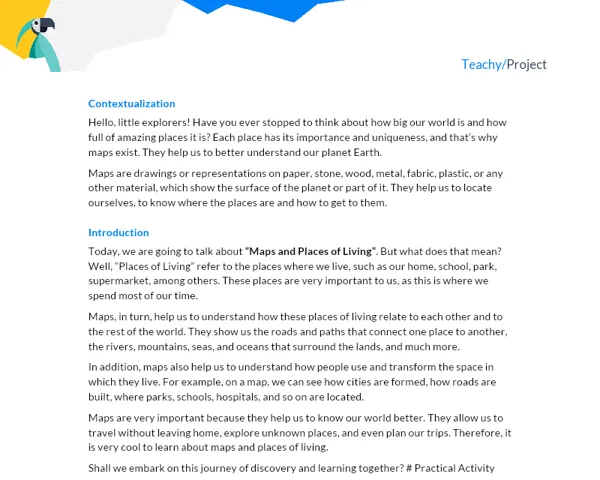Contextualization
Hello, time and experience explorers! In this exciting project, we will embark on a journey of discovery to better understand the concept of time and how it affects our lives and the way we perceive the world around us.
Geography, as you may already know, is not just about maps and distant places. It also helps us understand the processes that shape our planet and the way we live on it. And one of these processes is time.
What is time? How does it influence our lives? How do we perceive time? These are some of the questions we will explore in this project. Believe it or not, time is not just an abstraction - it is an essential part of how we live and experience the world.
Time affects how we move, how we work, when we eat, sleep, and play. It also influences how we see things around us. For example, have you ever noticed that some plants only bloom at certain times of the year? This happens because plants have a unique way of perceiving time and adapting to it.
Now, you must be wondering, why is it important to understand time and experience? Well, the answer is simple. By better understanding these concepts, we can become more aware of how our actions in the present affect the future. And this is essential for us to live more sustainably and harmoniously with our planet.
Are you ready to start this amazing journey? Let's go!
Practical Activity: "My Seasons Calendar"
Project Objective
- Understand the concept of time and experience, in order to perceive how the seasons of the year influence our daily lives and the environment around us.
- Develop observation, data collection, organization, and creative expression skills.
Project Description
In this project, each group of explorers will create a personalized "Seasons Calendar," highlighting the main characteristics of each season of the year and the changes that occur over time.
Required Materials
- Cardboard or poster board
- Colored pens, colored pencils, crayons
- Old magazines
- Blunt scissors
- Glue
- Ruler
Step by Step
-
Group Formation: Students should form groups of 3 to 5 people.
-
Research and Data Collection: Each group should research the four seasons of the year (spring, summer, autumn, and winter) and collect information about the main characteristics of each season (temperature, climate, changes in nature, important dates, etc.).
-
Calendar Creation: Using the cardboard or poster board, the groups should draw a large calendar, dividing it into four equal parts, one for each season.
-
Calendar Decoration: With the help of old magazines, students should collect images that represent each season and paste them in the respective quadrant of the calendar. They can also draw their own images.
-
Data Recording: In each quadrant of the calendar, students should record the information they collected about each season. They can write keywords, short phrases, or make small drawings.
-
Calendar Presentation: After completing the calendar, each group should present it to the class, explaining the characteristics of each season and the changes that occur over time.
Delivery Format
Students must submit the completed "Seasons Calendar." The oral presentation of the project will be held in the classroom, where each group will have the opportunity to share what they have learned with the class. The project must be submitted by the date established by the teacher.
Remember, explorers, Geography is a discipline that is everywhere around us. So, let's put on our explorer boots and embark on this journey through time and experience!

